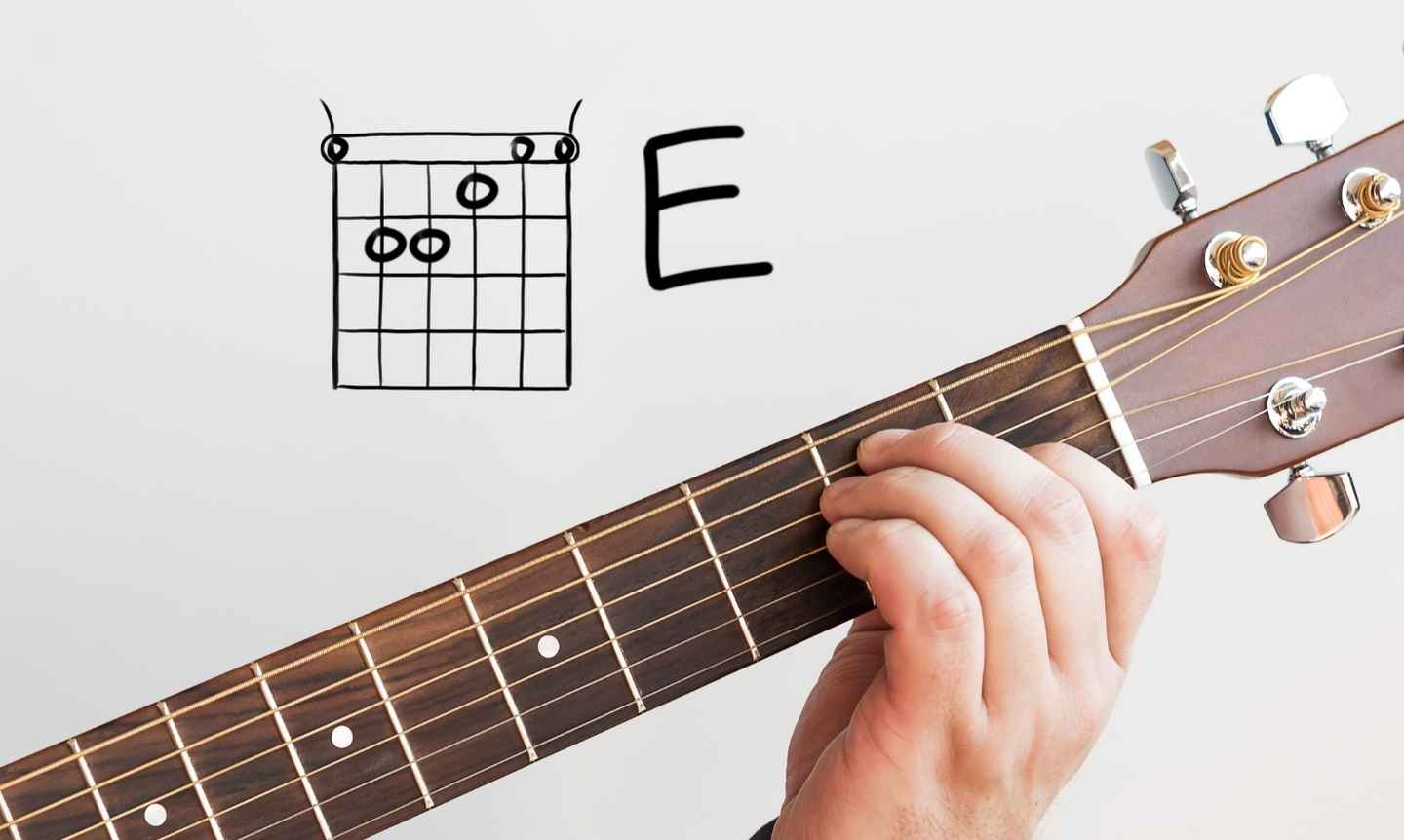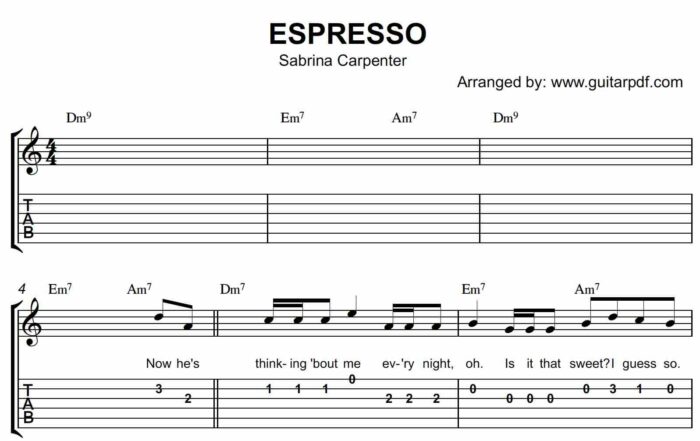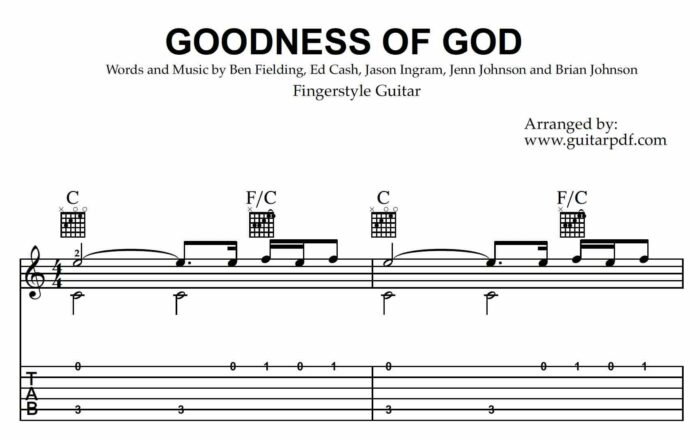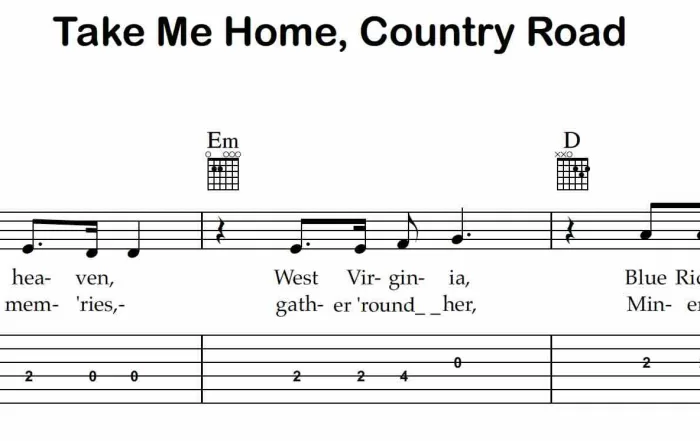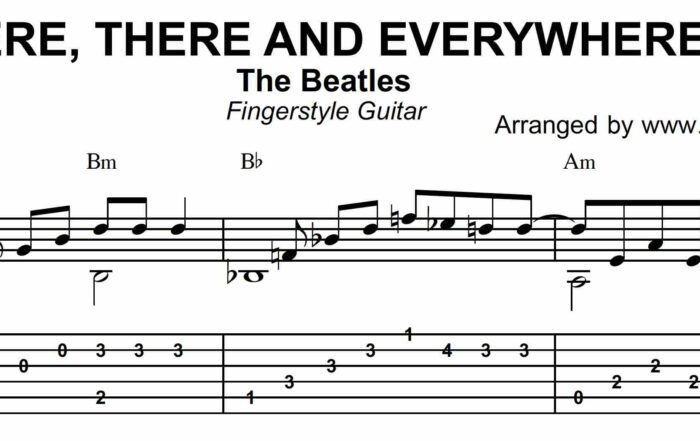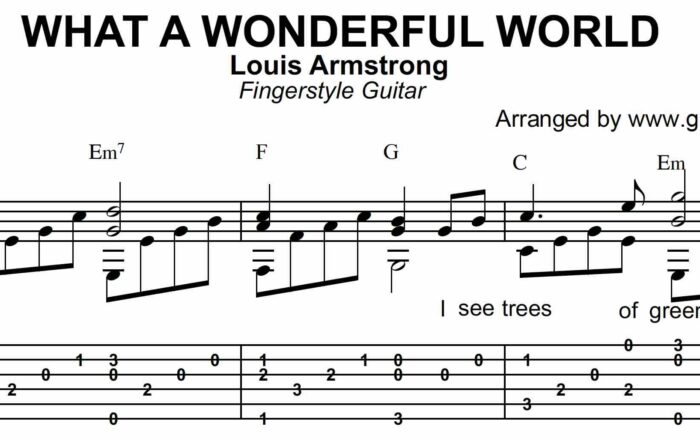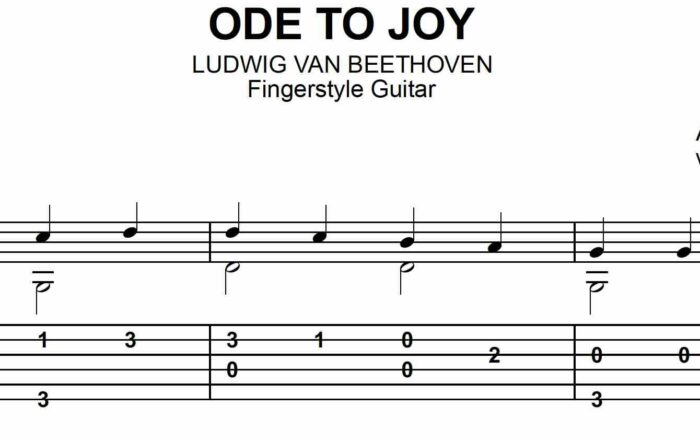Guitar Chords PDF
If you really want to teach your self to play the guitar, the only way to start is to learn the Guitar Chords PDF. It is not really proper to learn first some melody that you can play on a single string of the guitar. If that is what you wanted, then go ahead and play Ukulele instead.
All of the famous guitar heroes you know started with a single chord when they were just beginning. There is no shortcut to learning scales and playing incredible solos and improvisations without first taking the time to learn and memorize different chords.
Guitar chords pdf serve as the backbone of a musician when creating a song and are a crucial ingredient in producing a track. Without a group of chords, a musician cannot achieve the beautiful melodies and rhythms of a song. The chords they play by strumming or plucking guide them in completing a song with musical meaning.
This post will assist you in learning your first guitar chords if you are just starting to play the guitar. This article demonstrates how to interpret guitar chord diagrams and provides instructions to play those chords on your instrument. You can also download a printable PDF containing guitar chords which includes a photo demonstrating how the chords are played on a real guitar. The photo will demonstrate precise finger positions on the guitar frets which will assist you in mastering the chord diagram.
What is a Guitar Chord?
The definition of a guitar chord involves multiple notes sounding together at the same time. In other words, a chord is a group of notes being played simultaneously. Playing a chord on the guitar generally involves pressing down and strumming three or more notes simultaneously to produce harmony. The selection of notes for guitar chords adheres to precise formulas and patterns that conform to established principles of musical theory.
Songs use chords as their structural core to generate mood shifts and emotional depth while driving musical progression. As you may already know, that major chords produce bright and cheerful sounds in contrast to minor chords which create a melancholic or somber atmosphere.
How to Read Guitar Chord Diagrams?
Learning to read chord diagrams is essential when you begin studying guitar chords. Through these diagrams you can visually understand the correct placement of your fingers on the fretboard for playing specific guitar chords. The diagrams instruct you on finger placement across the strings and identify which strings need to be pressed down versus those left open.
See below how the C Major chord interpreted using the chord diagram:

Horizontal lines in the diagrams show the frets and vertical lines display the strings. The diagram’s numbers show which fingers you should use on each string respectively. You will notice that there is a bolder line that represents the Guitar Nut. The nut is usually a white plastic on the fingerboard that holds the strings. If the chord is higher and located far from the guitar nut, the representation of the chord diagram will be like this:
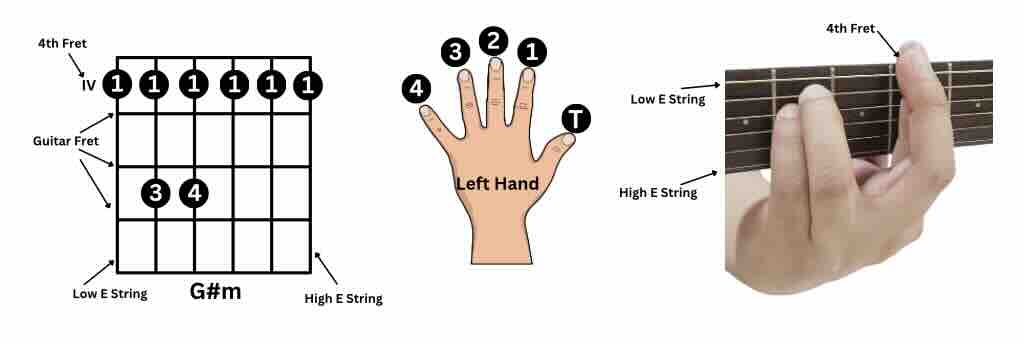
Notice that there is a Roman numeral on the chord diagram when the chord is meant to be played on a specific fret far from the guitar nut. In the illustration above, the G#m chord is fingered on the 4th fret. Take a close look at how G#m is played—you’ll notice that both the index and middle fingers are placed on the same fret. This technique helps strengthen the index finger to hold down all the strings in barre chords, especially minor chords.
Now that you know how to read a chord diagram, it’s time to learn your first chords and start playing the songs you love!
Major Chords
Major chords are the foundation of music, creating an uplifting, happy, and bright sound. As a guitarist, you are expected to know all the major chords, as they are among the most commonly used when playing music—just like their counterpart, minor chords.
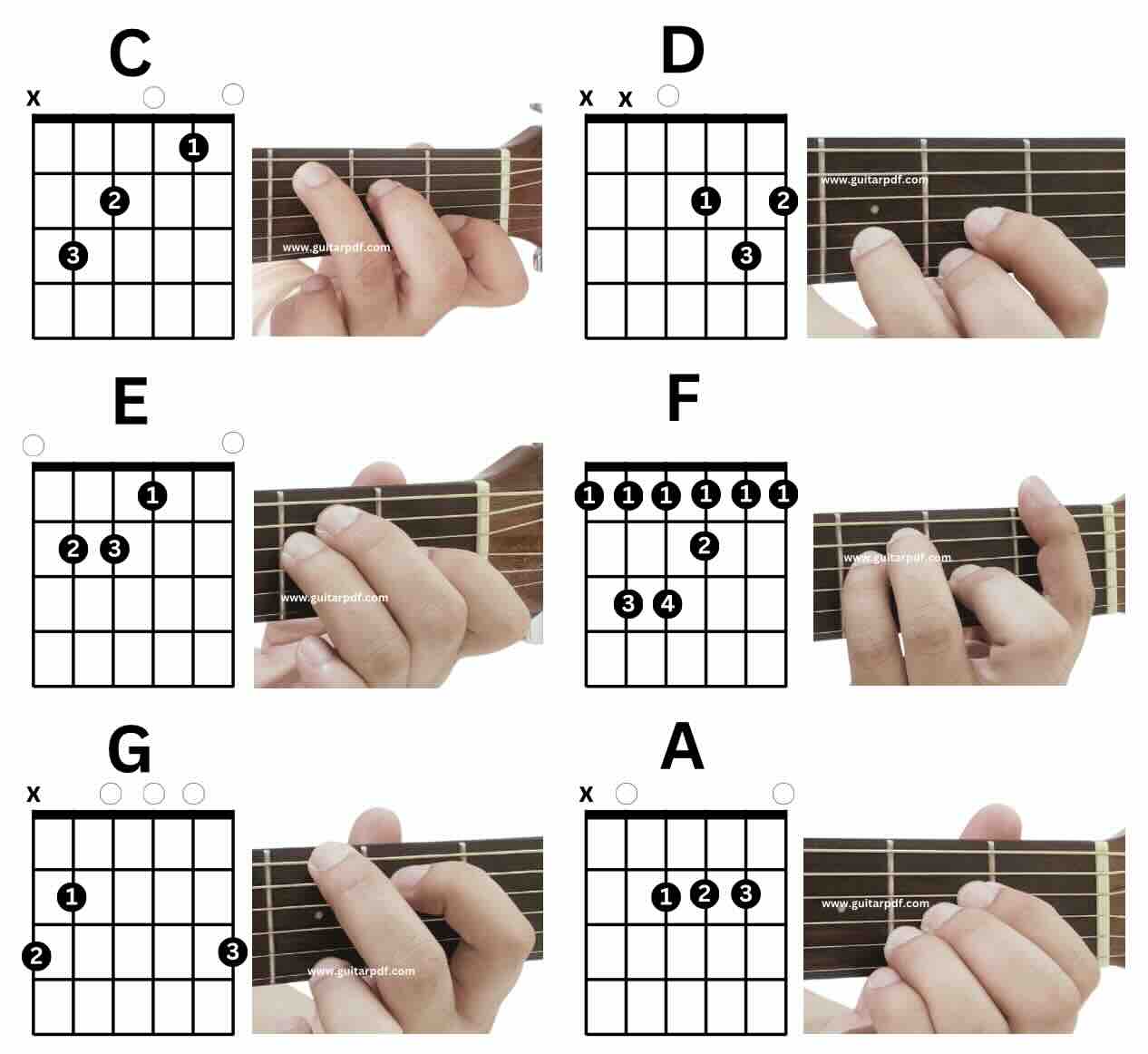
Download the complete Major Chords with illustration in PDF format here: Major Chords with Illustration
Minor Chords
Music relies on minor chords which create rich expressive tones that can evoke somber feelings. Minor chords develop from major chords by reducing the third note by half a step to create their distinct sound. The slight modification generates profound emotional resonance that tends to evoke feelings of sadness, mystery, or introspection. Musical styles like classical, jazz, rock, and pop frequently use minor chords to enhance their progressions through added depth and contrast. Musicians who understand and master minor chords can produce more dynamic music with deeper emotional resonance.
Here are the Minor Guitar Chords with illustrations:
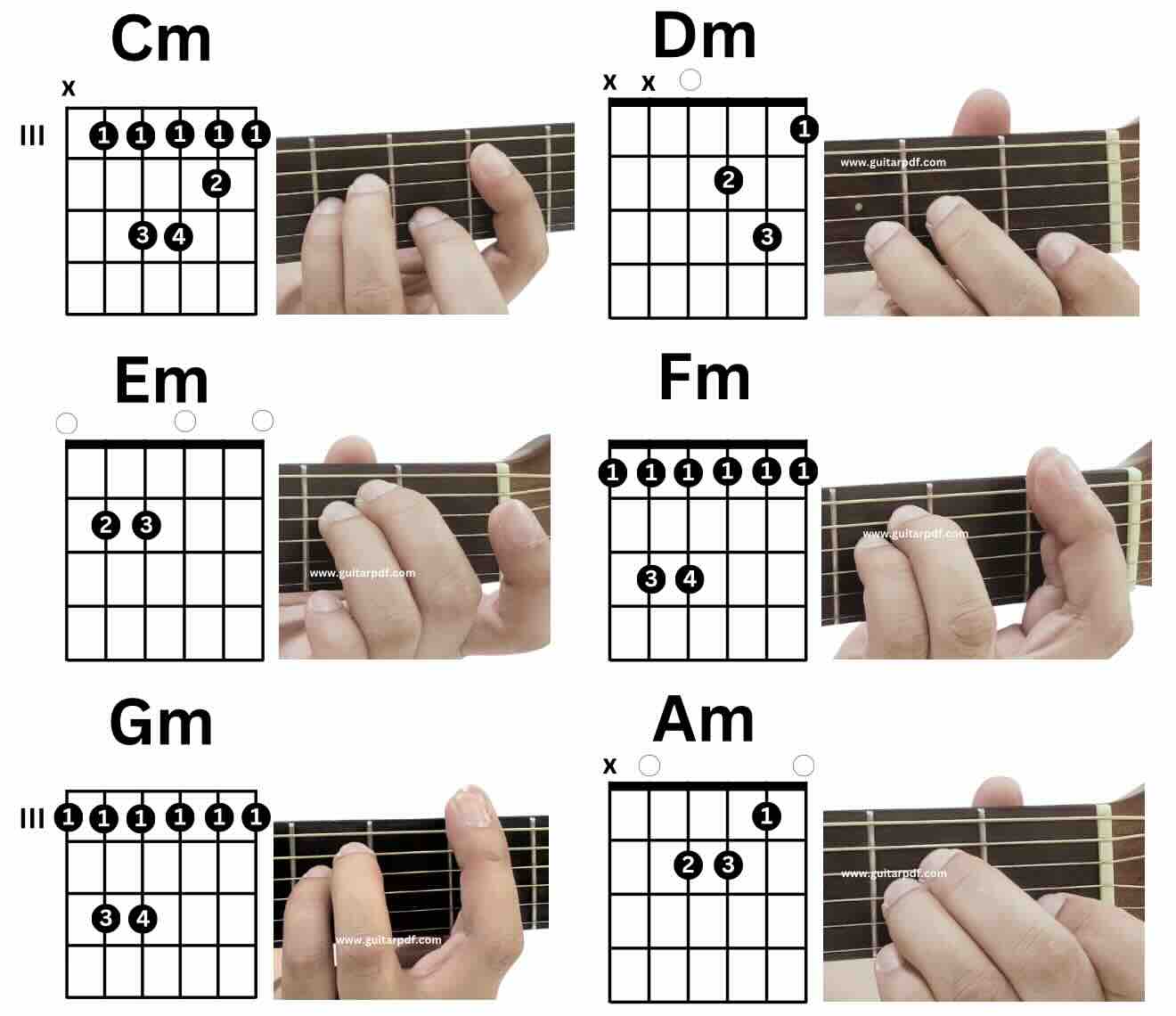
Download the complete Minor Chords with illustration in PDF format here: Minor Chords with Illustration
With the guitar chords pdf chart available to you now, practice diligently until you remember each chord by heart. Study the illustration to understand correct finger positioning and work on transitioning between chords without any hitches. Successful progress at this guitar learning phase requires you to develop a solid foundation through regular practice and dedication. As you continue to practice, you will learn chord transitions until they become natural and you can play songs without any difficulty.
Every guitarist who wants to improve must first learn and master the music’s chords. Once you learn basic elements like open chords and chord diagrams, your ability to play numerous songs will expand. Your playing flexibility will expand as you learn barre chords and advanced shapes during your guitar progress.
To master your chord-playing abilities, you must commit to regular improvement while maintaining consistency. Start by practicing each new chord slowly while aiming for precision before working on increasing your playing speed and strength over time. By staying patient and dedicated, you will quickly learn to play your favorite songs with greater confidence.

